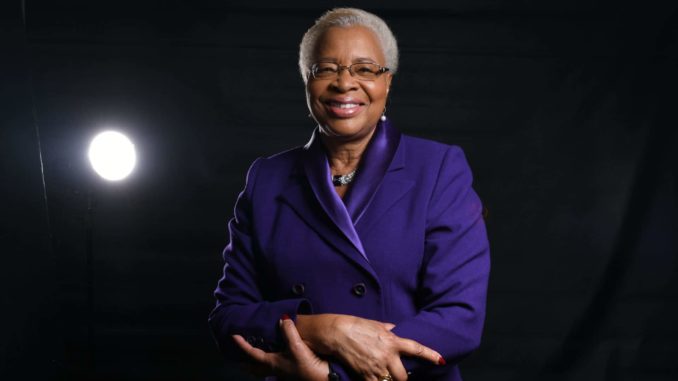
Judith Ayaa was born on July 15, 1952 in the sub-county Koch Goma in Nwoya District in Uganda. During an era when African women participation in athletics was in its prevalently nascent and amateur stages, young Ayaa became a resounding name amongst African women track stars. Ayaa became the first Ugandan woman to win a Commonwealth Games’ medal. The female Ugandan Commonwealth Games’ medallists who followed in her footsteps are three: Ruth Kyalisiima (Kyarisiima/ Kyalisima) in Brisbane in 1982 where she won the silver in the 400 meters-hurdles (57.10), gold-medallist Dorcus Inzikuru in the 3000 meters-steeplechase in Melbourne in 2006 whereby she established a Games’ record (9:19.51), and bronze-medallist Winnie Nanyondo who was third in the 800m (2:01.38) in Glasgow in 2012.
Judith Ayaa’s career on the track would be short-lived, though of significant fulfillment.
The record of Judith Ayaa in the East and Central African Athletic Championships is amazing. In 1968 (Dar-es-Salaam), Ayaa won gold in the 100 meters sprint, finishing in 11.5. The following year in mid-August 1969, Ayaa cemented and confirmed her formidability by in the same championships (Kampala) winning in the 100 meters (11.8), the 200 meters (25.0), and the 400m (53.6). Jane Chikambwe, considered an athletics legend in Zambia won silvers behind Ayaa in the 100m and 200m. Here in Kampala in 1969, Ayaa was part of the Uganda 4x100m relay team that won in 49.5. In the same year, based on her personal best time of 53.6, Judith Ayaa was ranked amongst the world’s top 10 female 400m runners.
In 1970 at the same ECA Championships (Nairobi), Judith Ayaa did not slip behind. The slim young woman with the “Mercedes-Benz” body again won in the 100m (11.8), the 200m (24.1), and the 400m (54.0s).
It was at the Commonwealth Games held in Edinburgh in Scotland in 1970 that Judith Ayaa established herself as an international female athlete to be reckoned with. At these Games, Judith Ayaa notably competed in the 100m and the 400m. On July 17th, Ayaa was placed in the first of the five 100m preliminary heats. He performed reasonably well, finishing in second place, behind Jenny Lamy of Australia, in 11.92 seconds. But the semi-finals, the next day, were not as fruitful for Ayaa. She was placed in the second of the two semi-final heats, and was beaten into sixth place (11.93) and eliminated from advancing to the finals. The finals, later in the day, were won by Raelene Boyle of Australia, followed by legendary Alice Annum of Ghana, and then Marion Hoffman of Australia for the bronze medal.
There were much fewer competitors in the 400m so there would only be two rounds of competition. On July 22nd, Ayaa was placed in the second of two heats of the first round. Ayaa won in a relatively astounding time of 52.86 seconds, a new Uganda and Africa record. The finishing time by Ayaa ranked her as eleventh in the world in 1970. Alice Annum who had been scheduled to compete in the same round, did not start.
Ayaa advanced to the finals that would be contested the next day. But perhaps she had ran too fast instead of running while relaxed but enough to be amongst the top four of each round that would automatically qualify for the finals. Sandra Brown of Australia, was second, and a full second behind Ayaa. The other semi-final heat in which Marilyn Neufville won in 53.05, was of more relaxation and tactfulness.
The finals the next day witnessed diminutive but legendary 17 year-old Jamaican Marilyn Fay Neufville, winning in a world record of 51.02. Neufville won by an astounding more than two seconds ahead of silver medallist Sandra Brown (53.66) of Australia; she reduced the previous world record of 51.7 established (1969) by Colette Besson and Nicole Duclos both of France by nearly a second. Judith Ayaa, overtaken after slowing down near the end of the race, likely due to fatigue after her unnecessary exertion in the semi-finals, was third (53.77) in a photo-finish behind Sandra Brown and captured the bronze medal. The fatigue had likely cost her at least the silver medal; but the Commonwealth bronze would be one of Ayaa’s most acclaimed international possessions!
Marilyn Neufville’s superb career would be short-lived because of physical injuries and inconsequential surgery. At the 1974 Commonwealth Games held in Christchurch in New Zealand Neufville was 6th in the finals of the 400m. And at the Olympic Games of 1976 held in Montreal in Canada, she participated in the first round of the 400m and qualified for the next round, but she did not move forward into the next round because of injuries.
The next major event for Ayaa would be from July 16-17, 1971 at he Wallace Wade Stadium at Duke University in Durham in North Carolina. It was the USA versus Africa and the Rest of the World Meet (sometimes referred to as the USA-Pan African Track-and-Field Meet). The event that attracted a high capacity crowd of a total of 52000 spectators was of a unified African team together with other nations (fourteen nations altogether) versus the USA team. Perhaps the main attraction was 1500m Olympic gold-medallist Kipchoge Keino who was revered and renowned for his track rivalry with American middle-distance legend and 1500m world-record (3:33.1) holder Jim Ryun. Here at Duke, Keino intended to break this world record.
Other internationally acclaimed runners in the competition included Kenyan Amos Biwott (steeplechase Olympic champion), and long-distance Tunisian legend Mohammed Gammoudi. Ugandan hurdler John Akii-Bua of Uganda who was hardly known internationally, was also there to compete.
Judith Ayaa won the gold medal at these USA-Pan Africa Games in 54.69. Second was Gwendolyn Norman (USA) of Sports International in 55.42, third was Jarvis Scott (USA) of Los Angeles Mercurettes in 56. 0, and fourth was Titi Adeleke (Nigeria) in 59.52. John Akii-Bua won in the intermediate hurdles, establishing an Africa record (49.0) that would be the world’s best time for 1971. Smooth-sailing “flying policeman” Akii became signified as a contender for the forthcoming Olympics in 1972 in Munich. Simultaneously, Ayaa gained international acclaim though not to the level of Akii. Kip Keino failed to break the world record in the 1500m, but he clearly led and finished in quite an excellent 3:34.7.
John Myers airs Akii-Bua’s comments, here sometimes referred to as “John Akii-Buba” (1971: 6A): “The runners were good… The track is fast. It was not uncomfortable.”
Other notable competitors at the track and field meet included Americans Rodney Milburn and Ron Draper (high hurdles), Kenyans Robert Ouko (800m) and Benjamin Jipcho (steeplechase); Steve Prefontaine (USA) and Miruts Yifter (Ethiopia) in the 5000m, and John Smith (USA) in the 400m.
Still in 1971, at the East and Central African Championships held in Lusaka in Zambia, Ayaa was the winner in the 400m (54.7). She was also part of the Uganda gold medal winning teams in the relays: 4x100m (48.7) and 4x400m (3:50.5).
The next major challenge for Ayaa, the Olympic Games of 1972 held in Munich in Germany would prove to be interesting. In the first round, Ayaa in lane two came in fourth (52.85s) thereby qualifying for the quarter-finals. In the quarter finals, Judith Ayaa was drawn in lane 7 in her heat two of four heats. The first four finishers of each heat would move on to the semi-final. Ayaa comfortably finished third and established a Uganda and Africa record of 52.68. The Uganda record, Ayaa’s personal best, would stand for more than three decades. Of note, in these quarter-finals, Ayaa beat 26 year-old Colette Besson of France the diminutive surprise winner in the same event at the previous (1968) Olympics in Mexico City. Besson was in lane 3 and her 5th place finish disqualified her from advancing to the next round.
Ayaa moved on to the Olympics’ semi-finals. She was in lane 2, and finished in 52.91 seconds, a 7th place finish. Ayaa had put up quite a commendable performance, but the international competition was formidable, and Ayaa was eliminated in what would be her first and last Olympics competition. The eighth competitor, Christel Frese of West Germany, fell during the race and did not finish.
In 1972, Ayaa became a 4-time gold medallist in the 400m at the East and Central African Championships. This time, in Dar-es-Salaam, Ayaa’s winning time was 55.7. She was part of the Uganda team that won the gold medal in the 4x100m (48.7).
After 1972, Ayaa’s performance record would become lackluster. She got married and started having children in close succession, and neglected sports. The tumultuous regime of Amin made the situation worse. Athletes were far less financially compensated for their toil and injuries, than they have increasingly been in the recent decades. Ayaa’s demise was far from glamorous; it was disheartening. At some point later in her life, while looking after her two young children, Ayaa struggled, and sometimes begged on the streets of Kampala. She would crush stones for a living. Akii-Bua, also a national team-mate with Ayaa at the Olympics in 1972, would be instrumental to the drawing attention to and the intervening in the plight of Ayaa. She was located and a European benefactor helped with expenses. Unfortunately, in 2002 Ayaa would die young at 48 or 49, at Mulago Hospital in Kampala. Ironically, Akii-Bua who was also then not faring well, had died at about the same age of death as Ayaa, earlier in 1997 at the same hospital.
Ayaa’s reign on the women’s track was short but is superb and enduring. Trophies and national and regional competitions in northern Uganda have become commemorated in the name Judith Ayaa.
Works Cited
Myers, John. “Hosts Winning Score in Pan Africa Meet” in “Carolina Times” (July 24, 1971).
Proudly WWW.PONIREVO.COM



